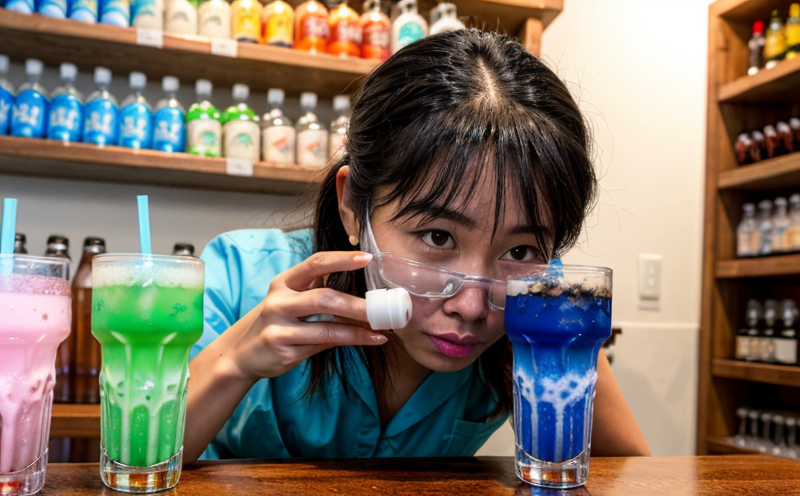FDA BAM Chapter 10 Listeria Detection in Beverages
The FDA's Bacteriological Analytical Manual (BAM) Chapter 10 provides a standardized method for detecting Listeria monocytogenes, a pathogenic bacterium that can cause listeriosis. This disease poses significant health risks to vulnerable populations such as pregnant women, the elderly, and immunocompromised individuals. Ensuring compliance with FDA BAM Chapter 10 is crucial for beverage manufacturers aiming to maintain product safety standards.
The detection method outlined in FDA BAM Chapter 10 involves a series of steps designed to isolate, identify, and confirm the presence of Listeria monocytogenes in beverages. This comprehensive protocol ensures that any potential contamination can be identified early on, allowing for timely corrective actions and safeguarding public health.
The process begins with proper sampling techniques tailored specifically for various beverage types. Samples are then prepared using appropriate media and incubation conditions to enhance the likelihood of detecting Listeria monocytogenes. Once isolated, preliminary tests such as biochemical reactions or PCR-based methods help differentiate Listeria from other similar microorganisms.
For accurate identification, techniques like serotyping, pulsed-field gel electrophoresis (PFGE), or MALDI-TOF mass spectrometry may be employed. These advanced analytical tools provide precise information about the strain of Listeria present in the sample, which is vital for outbreak investigations and epidemiological studies.
Compliance with FDA BAM Chapter 10 not only ensures that products meet regulatory requirements but also contributes to building consumer trust by demonstrating a commitment to high-quality manufacturing practices. By adhering strictly to these guidelines, beverage companies can protect their reputation and avoid costly recalls or legal issues stemming from product contamination.
Moreover, maintaining rigorous quality control measures throughout the production process helps minimize the risk of Listeria introduction into finished goods. Regular monitoring through periodic testing according to FDA BAM Chapter 10 allows manufacturers to proactively address any emerging challenges related to food safety.
In summary, implementing FDA BAM Chapter 10 procedures for detecting Listeria in beverages is essential for maintaining strict adherence to regulatory standards while promoting overall product quality and consumer confidence. This approach underscores a company's dedication to providing safe and reliable products that meet both legal requirements and market expectations.
Scope and Methodology
| Step | Description |
|---|---|
| Sampling | Collect representative samples from different parts of the beverage production process. |
| Preparation | Transfer sampled contents into appropriate enrichment broths for growth optimization. |
| Incubation | Allow inoculated samples to incubate under controlled conditions conducive to Listeria growth. |
| Isolation | Select colonies suspected of being Listeria and transfer them to selective media for further identification. |
| Identification | Determine whether selected colonies are indeed Listeria monocytogenes using biochemical tests or molecular techniques like PCR. |
| Confirmation | Confirm the identity of positive results via serotyping, PFGE analysis, or MALDI-TOF MS to ensure accuracy. |
Benefits
Compliance with FDA BAM Chapter 10 offers numerous advantages for beverage manufacturers:
- Avoiding Legal Issues: Ensures adherence to strict regulatory standards, reducing the risk of legal actions.
- Enhancing Consumer Trust: Demonstrates a commitment to product safety and quality, fostering customer confidence.
- Protecting Reputation: Safeguards brand reputation by minimizing the likelihood of negative publicity associated with unsafe products.
- Minimizing Risks: Early detection allows for swift corrective actions, preventing potential health hazards and financial losses.
Environmental and Sustainability Contributions
BAM Chapter 10 Listeria detection plays a role in environmental sustainability by fostering safer food production practices:
Reducing Contamination Risks: By identifying potential sources of contamination early, manufacturers can implement targeted interventions to prevent further spread.
Informed Decision-Making: Accurate identification helps allocate resources efficiently towards areas needing improvement, optimizing operational processes.
Enhanced Product Quality: Consistent application of robust testing protocols leads to higher-quality products that better meet consumer demands and expectations.





